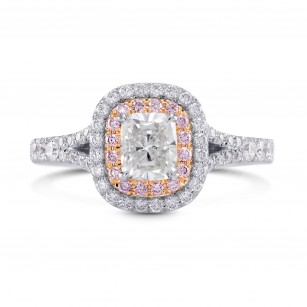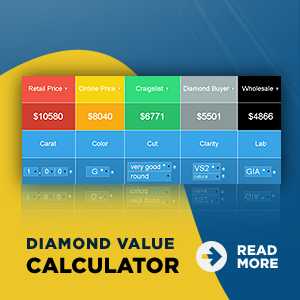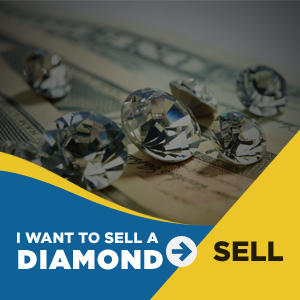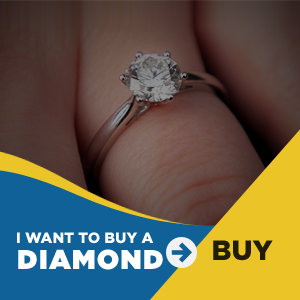
Have you at any point contemplated how blockchain could influence the diamond business? Likely not, correct? In any case, presently blockchain innovation could improve how we track diamonds, from the mine to the gems store.
Be that as it may, there’s an issue with diamonds. Likewise with any well known industry, the diamond market isn’t actually squeaky clean. A few diamonds, known as strife diamonds, are unlawfully exchanged to store wars abroad. You may not know this because of the extreme interest for diamonds. Very nearly 50 percent of the interest for diamonds originate from the US — and is anything but a shock. All things considered, it is the go-to gem of commitment and weddings. Furthermore, on account of its solidness, diamond is perfect for mechanical use.
All things considered, digging for diamonds can be a fierce undertaking. The 2006 hit Blood Diamond, featuring Leonardo DiCaprio, acquainted the tragedies related with diamond mining in Africa to the world’s stage.
In any case, partners in the diamond business legitimately need to stop the exchange of contention diamonds, and blockchain may be the arrangement.

What Is a Conflict Diamond?
For the individuals who don’t have the foggiest idea about, a contention diamond is a whole diamond that is mined in an outfitted clash zone. The diamond is then exchanged, and the assets are utilized to fund the battling. These blood diamonds are generally connected with clashes in focal and western Africa.
As per CNN, around 4 percent of the world’s diamond populace originated from Sierra Leone during its common war (1991-2002). What’s more, that is from only one nation! In an article by CBS, specialists recommended that blood diamonds could make up 15 percent of the diamond exchange.
In spite of these insights, there are measures set up that endeavor to cover the illicit business. The essential on-screen character is the Kimberley Process. This accreditation plan associates nearby governments and worldwide associations to take care of the issue. Their answer: Ensure each shipment of diamonds from these regions has accreditation.
Does It Work?
The Kimberly Process says it does and asserts a 99.8 percent achievement rate.
In any case, with such a large number of delegates, thus numerous means among mining and selling the diamonds, misrepresentation is still profoundly plausible. Many accept the procedure could be increasingly successful, including the diamond monster De Beers.

The Diamond Blockchain
The De Beers Group, which possesses more than 30 percent of the diamond showcase, has as of late reported its aim to seek after blockchain tech. It’s hard to believe, but it’s true. One of the business heads needs to use the blockchain to control strife diamonds.
From what we thought about blockchain, it should work. Indexing diamonds on the blockchain will make straightforwardness. Just a chosen few will approach the record, so as to guarantee that every person in the process carries out their responsibility effectively. You never again need to confide in governments, the mines, the shipment group. On the off chance that the diamond is ensured on the blockchain, it’s genuine.
De Beers intends to follow the diamonds from introductory mining to conclusive deal. That way, you can follow each move of the diamond on the advanced record.
Their blockchain adventure, Tracr, propelled in January 2018. Regardless of being established by De Beers, the organization focuses on that it has no entrance to the information except if it’s shared by the information proprietor. Utilizing the Kimberly Process as a guide, they’ve contributed with diamond workplaces, makers, graders, retailers, and different partners to make the undertaking a reality.
In any case, they aren’t the main ones utilizing blockchain to murder struggle diamonds.
In 2015, Everledger was utilized to safely follow diamonds. It returned 2017 with another Diamond Time-Lapse plan (DDLP). This new activity tracks the entire procedure, from mining to confirmation, continuously.
In any case, Everledger isn’t totally disconnected to De Beers, either. This tech was worked by Dharmanandan Diamonds, a trust of the DDPL and a sight holder of De Beers. As it were, the makers of Everledger are approved buyers of harsh diamonds by De Beers.
Is De Beers the Solution?
IBM joined the diamond-following exchange April of 2018, collaborating with different adornments firms, and they weren’t the only one. Indeed, a Canadian NGO, Impact, left the Kimberly Process through and through, refering to that the De Beers arrangement was inadmissible.
On the off chance that this is valid, there could be more space for blockchain tech improvement in the diamond business.
Rundown
Saying conflict diamonds are an issue is putting it mildly. The assets from these unlawfully exchanged jewels are subsidizing brutality and dread. Blockchain offers a dazzling arrangement.
Up until now, we’ve seen industry pioneers acknowledge the new tech with great enthusiasm, yet there’s still space for the innovation to develop, and the procedure can in any case advance.
Be that as it may, one thing is sure: These activities are making us consider how we can counteract the exchange of blood diamonds and make ready to harmony.




















 Oval
Oval
 Radiant
Radiant



























